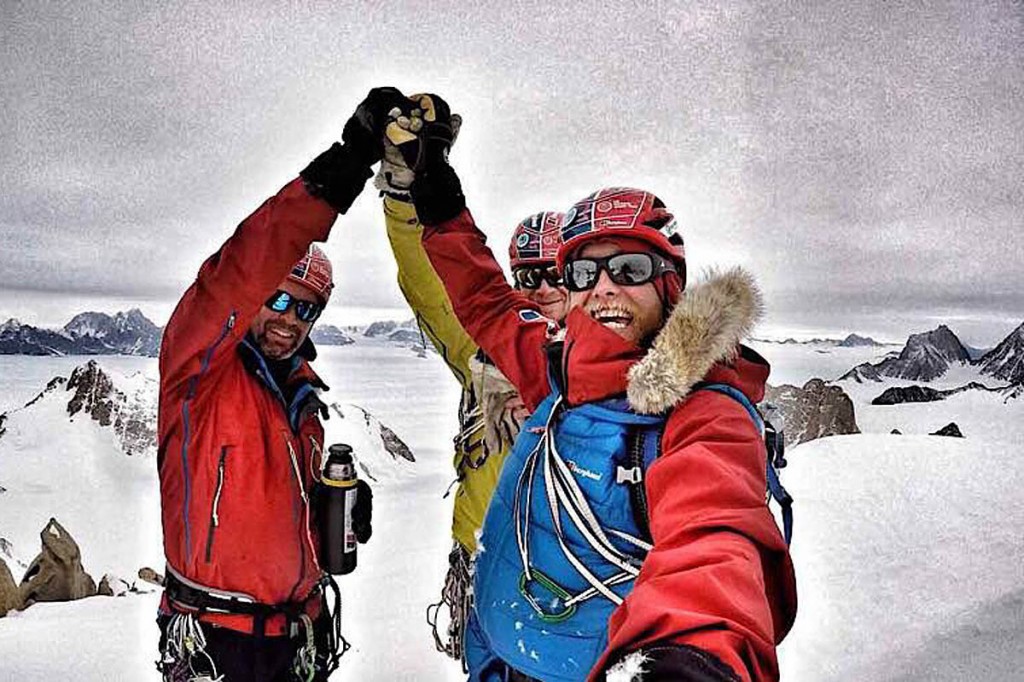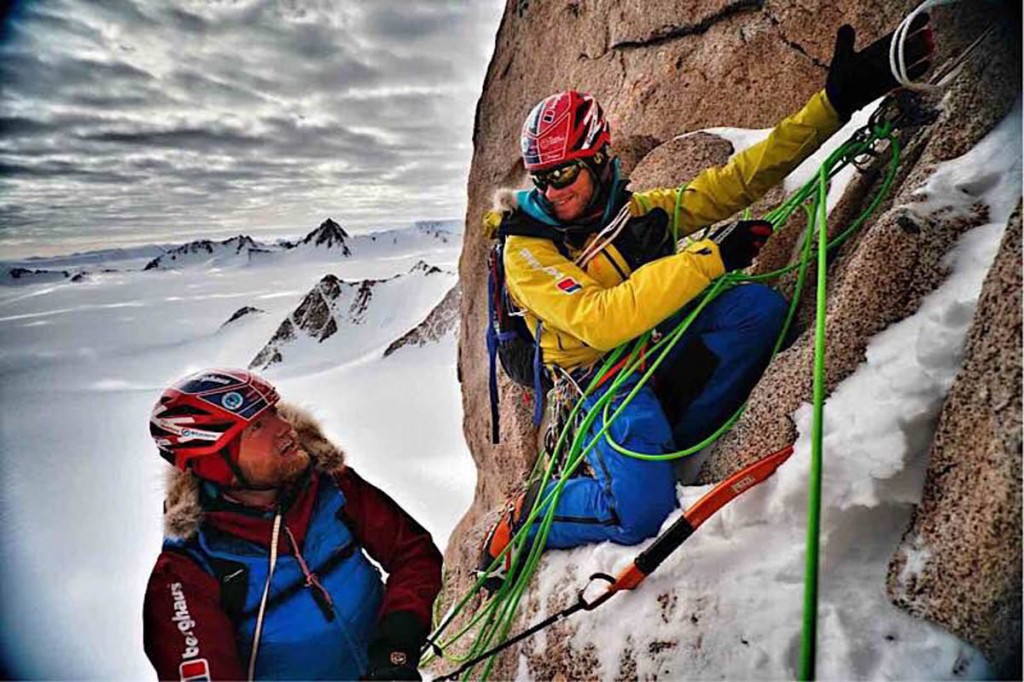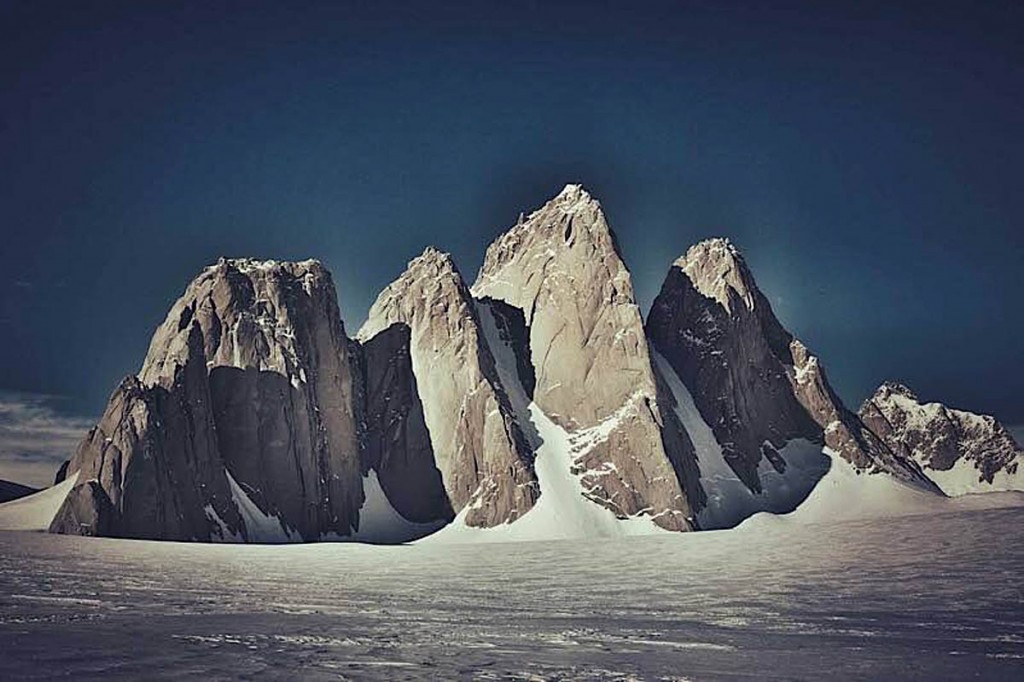Climber Leo Houlding has reached the summit of the Antarctic mountain he set out to ascend.
But bad weather and delay getting to the Spectre meant the adventurer and his two team-mates had to use a different route from the unclimbed south face one they originally intended to use.
The Berghaus-sponsored mountaineer reached the top of the 2,020m Spectre in the Gothic Mountains about midnight on Thursday after more than 16 hours of ‘snakes and ladders’ exploring the north face in an attempt to find the best route to the summit.
Houlding, Jean Burgun and Mark Sedon then spent a further four hours descending to the safety of their camp, fearful of deteriorating weather.
A Berghaus spokesperson said: “Because of the nature of their expedition, the team has little time left for additional exploration and climbing before they have to start their long journey home – they still have over 1,700km to travel, man hauling and kite skiing with 100kg pulks – which makes a viable attempt on the south face an impossibility.
“Therefore, they have decided to focus attention on their secondary objective: a skyline traverse of the Organ Pipe Peaks.”
Leo Houlding described the difficult ascent of the Spectre in his report back to the outdoors brand that is sponsoring the expedition. He said: “After a partial circumnavigation of the Spectre to check descent and ascent options we formulated a plan.
“Basically, everything looks pretty hard, long and seriously committing. After much consideration, we decided the wisest course of action was for all three of us to attempt to summit the Spectre by the route of least resistance.
“That would be to repeat the Mugs and Edmund Stump route on the north side of the Spectre. Though the north side is still a very formidable peak, it lacks the aesthetic perfection of the south side. It is a complex maze of snow ramps, chimneys and steep buttress steps that do not form an obvious line to the summit.”
The three men left their camp at 8am and Burgun took the lead. Houlding said: “Very quickly, route finding became an issue. Jean was faced with four ladders to climb leading in four very different directions, three of which led to snakes to slide back down.
“In situations like this, the best course of action is for the leader to try to have a decent look at every option before committing to one, as once committed if it turns out to be a dead end it is very time consuming to descend and try another. It is impractical to traverse 20m left, 20m right, then go up a bit, to try to see further. Often there is no clear correct choice.
“You must simply try your hardest to find a way that you can climb without too much risk, and this we did for many hours. Jean led a particularly tough, scary pitch, quite low down. We convinced ourselves that this was not the way Mugs and Ed would have gone, but for a few rope lengths above, the terrain looked okay, so we continued.
“We stumbled across an old piton and sling abseil station from the Stumps. We zigged and zagged our way across the face, covering a fair amount of distance, over a great deal of time, without gaining that much altitude. Gradually the cloud built up and the light flattened, and with it the intimidation increased and the mood subdued.
“Never did we discuss retreat, but I know we were all thinking: ‘If the wind picks up, this is a survival situation and we’re out of here’.
“It took hours and hours to progress towards false summit, before another false summit. When we thought we must be nearing the summit we hit a 25m cliff band that we had traversed two full rope lengths of snow ramps to reach. Proper climbing, but short enough that I was sure I could get up it quickly. But it was wide, loose, and hard.
“By the time we got to the top of the rock band, which was still some hours from the summit, we were all starting to feel pretty strung out.
“The level of commitment of being high on a steep, complex face out here at the end of the Earth is impossible to overstate. Away from the sanctuary of our camp, we are so very isolated, and so very exposed. If Antarctica snarls, it is very quickly a survival situation.
“It was with more anxiety than pleasure that we pushed on to the summit, ready to turn and run at the first whiff of wind.
“Antarctica smiled upon us, and eventually we could go no higher – the summit.
“It was close to midnight already and in truth it wasn’t a very joyous summit experience as we were all so anxious for the long complex decent. Seeing our camp so tiny and so far below didn’t help matters.
“We began the return journey. Jean led the descent fastidiously and efficiently and to our great relief the weather did not deteriorate any more. Our fears were for naught and we were back in the approach couloir within three hours.
“We breathed a deep sigh of relief. Stumbling back into camp at 4.20am was a wonderful feeling. Security, safety, survival; it really feels like home.”
Further details will be posted by the team on the Spectre expedition website.



Ian512
11 December 2017When does a 'climber' become an 'adventurer'?